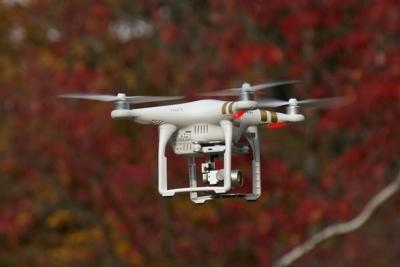New European Program Builds on The Sherpa Project For Autonomous Aircraft
AirBorne is a new European program, building on the earlier Sherpa project, that will develop a heterogeneous system of autonomous robots capable of assisting and enhancing rescue operations in mountain environments.

Coordinated by the University of Bologna and funded by the European Union, AirBorne has two principal objectives: the first, technical, is to improve the technology of the prototype developed by the Sherpa project, so that it can be manufactured in series on an industrial scale. The second goal, social, seeks to create a network of rescue services based on the new technology developed. In order to achieve the technological goal, the University of Bologna is responsible for a team coordinated by Lorenzo Marconi from the Department of Electrical, Electronic, and Information Engineering "Guglielmo Marconi", that comprises industrial leaders in the mountain rescue field: RECCO, a Swedish company whose proprietary technology uses radar to find avalanche victims; X-LOG, the German R&D company whose ARTVA technology was implemented on the Sherpa prototypes and, lastly, ASLATECH, the Italian company that manufactured the Sherpa quadcopter.
The team is completed by CAI - Club Alpino Italiano that, as the end user of the technology, will guide drone development by making its consolidated experience available to the design team. No less important, creation of the network of mountain rescue services will facilitate grassroots distribution of the technology, making it accessible to all mountain rescue teams and, indeed, to many others. This second part of the project will be assisted by PLUSVALUE, a British non-profit organization that specializes in implementing the strategies needed to ensure project sustainability, including acceptance of the underlying technology.
The Sherpa project, also coordinated by the University of Bologna, was completed successfully in March 2017. This four-year project resulted in the creation and development of a heterogeneous system of autonomous robots able to assist and enhance mountain rescue operations and, in particular, a prototype flying robot or “quadcopter”, a.k.a. drone, equipped with a special sensor for locating the position of avalanche victims.
The project, which involved various Italian and foreign partners from both the industrial and academic fields, had a marked social impact: mountain rescue teams found the system to be so useful that various examples of the prototype have already been delivered to centres of excellence for the training of rescuers, ahead of their future application in practice.
Now, thanks to AirBorne, the expected social impact is starting to look like a revolution in the mountain rescue field. The ability to save more human lives and improve rescuer safety is a fundamental achievement at a time when a growing number of persons, whether for work, rest or play, populate the snow clad mountains. Indeed, given such social factors as the human attraction to nature, the greater accessibility of mountain resorts, the growing number of persons with amateur-level skills, low awareness among city dwellers of the dangers present in natural environments and the higher average age of visitors, the number of persons potentially in need of mountain rescue has increased considerably in recent years. Just in Italy, there have been more than one thousand incidents over the past twenty years, involving over two thousand persons and around four hundred deaths. The opportunity to slash these statistics via greater visitor awareness and an improved “rescue machine”, partly due to
the contribution made by AirBorne, will be key to consolidating our relationship with the mountains.
(Source: University of Bologna news release. Image from file)
 Airbus Racer Helicopter Demonstrator First Flight Part of Clean Sky 2 Initiative
Airbus Racer Helicopter Demonstrator First Flight Part of Clean Sky 2 Initiative Diamond's Electric DA40 Finds Fans at Dübendorf
Diamond's Electric DA40 Finds Fans at Dübendorf ANN's Daily Aero-Term (04.23.24): Line Up And Wait (LUAW)
ANN's Daily Aero-Term (04.23.24): Line Up And Wait (LUAW) NTSB Final Report: Extra Flugzeugbau GMBH EA300/L
NTSB Final Report: Extra Flugzeugbau GMBH EA300/L Classic Aero-TV: 'Never Give Up' - Advice From Two of FedEx's Female Captains
Classic Aero-TV: 'Never Give Up' - Advice From Two of FedEx's Female Captains



